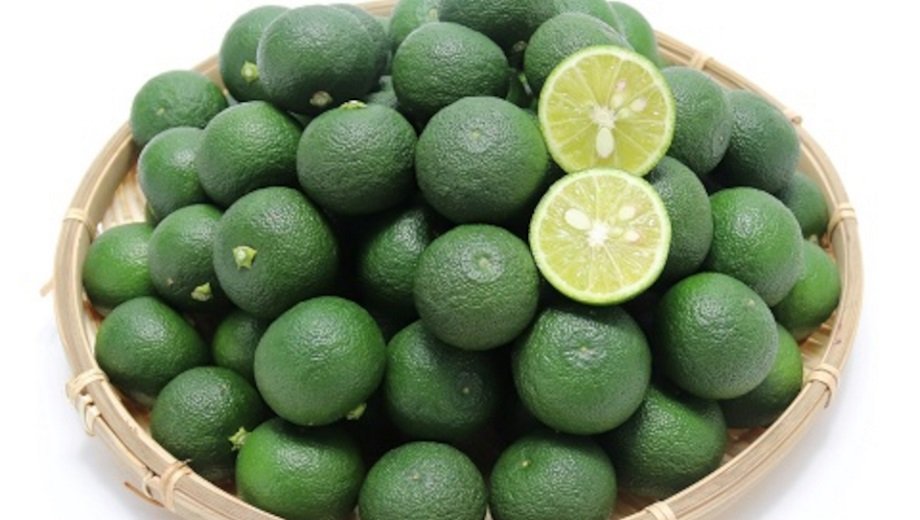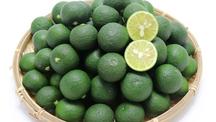Tokushima Sudachi
| Registration Number | 129 |
|---|---|
| Name of the GI | Tokushima Sudachi |
| Class | Fruit |
| Date of Protection | 2023/03/31 |
| Producing Area | Tokushima Prefecture |
| Applicant - Name and Address | Tokushimaken Sudachi Yuko Shohi Suishin Kyogikai 5-12 Kitasako Ichibancho, Tokushima City, Tokushima Prefecture |
Producing Area
"Tokushima Sudachi" is a flavorful acid citrus that accounts for 98% of "sudachi" shipments in Japan. Harvested when the skin is still dark green it is characterized by a beautiful appearance, fresh aroma, and sourness.
The quality is stably high throughout the year. It boasts good ratings due to high popularity among customers, continuous stable shipments, and the ability to respond to the various demands of volume sellers.
In Tokushima homes, "sudachi" is used to garnish various dishes. The demand is also high in restaurants, etc. "Sudachi" is increasingly recognized nationwide.
The variety of "Tokushima Sudachi" is a selected strain from native "sudachi" varieties of Tokushima Prefecture. The citrus is cultivated in conformity with the cultivation methods recommended by Tokushima-ken Sudachi Yuko Shohi Suishin Kyogikai (Tokushima Prefectural Sudachi and Yuko Consumption Promotion Council), controlled based on the storage methods recommended by the Council when stored after harvest and sorted according to the "shipment standards" specified by the Council.
Tokushima Prefecture is located in the southwestern part of Japan where the climate is warm and the amount of solar radiation is high. The prefecture is surrounded by the Shikoku Mountains (1) and Sanuki Mountains (2). The area has many slopes, drains well and typically suits fruit cultivation.
The name "sudachi" is believed to have come from "sutachibana (acid citrus)". The plant was naturally growing in Tokushima Prefecture already in the 8th century. During the Edo period (3), it was cultivated mainly for home consumption. Commercial cultivation started around 1965.
Accompanying the expansion to commercial cultivation, development and selection of superior varieties was carried out with the prefectural government taking the initiative. Shipments outside the prefecture increased, and "sudachi" became a representative specialty of Tokushima Prefecture.
The cultivation area of "Tokushima Sudachi" increased from about 4ha in 1932 to 660ha in 1992. However, it decreased to 397ha in 2017 because of the aging of farmers and has stabilized at around 400ha in recent years.
Tokushima Prefecture has always had at least a 95% share (yield) in the Japanese market since 1964, the year of the oldest record available. In 2013, exports to the EU started; and sales channel expansion including overseas is being promoted.
- The Shikoku Mountains are a mountain range that runs from east to west for 250km in the central part of Shikoku. The range occupies the outer zone of the Japan Median Tectonic Line and consists of 13 mountains of at least 1,000m, including the tallest Mt. Ishizuchi (1,982m) and Mt. Tsurugi (1,955m). On the southern side of the mountains, there are headsprings of the Shimanto River, Niyodo River, and Monobe River. On the northeastern side, there are headsprings of the Yoshino River and Katsuura River.
- The Sanuki Mountains are a mountain range running east to west along the border of Tokushima Prefecture and Kagawa Prefecture on the northeastern part of Shikoku. The highest peak is Mt. Ryuo (1,060m), from which the elevation gradually decreases towards both east and west.
- The Edo Period: 1603-1867. It is a period of Japanese history characterized by the establishment of a shogunate (feudal military government) in Edo (now Tokyo). Political administration under the Tokugawa clan began when Tokugawa Ieyasu became the era's first shogun.



